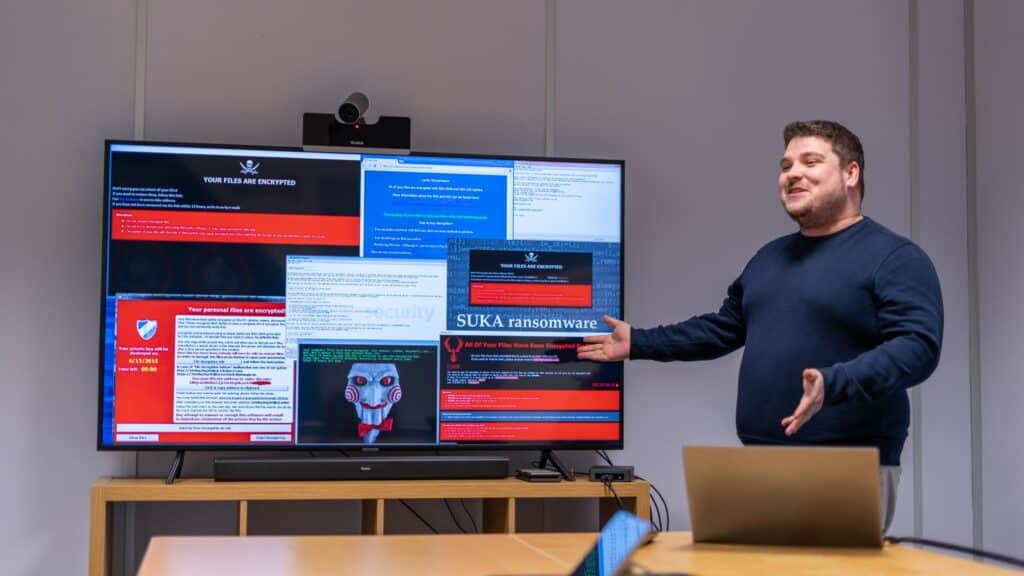In today’s digital age, cybersecurity is a critical concern for businesses of all sizes. Small businesses, in particular, are increasingly becoming targets for cyberattacks due to their often less robust security measures. One essential practice that can significantly bolster a small business’s defense is cybersecurity continuous monitoring. This proactive approach helps identify and mitigate threats before they can cause significant damage. In this article, we’ll delve into why continuous monitoring is crucial, what it entails, and how small businesses can implement it effectively.
Why Cybersecurity Continuous Monitoring Matters
Cybersecurity continuous monitoring isn’t just a “nice to have” for businesses; it’s a fundamental necessity. Here are several reasons why it is vital:
Breaches Happen Fast
Cyberattacks can occur in the blink of an eye. Hackers can exploit vulnerabilities within seconds, long before a business even realises there’s a problem. Continuous monitoring provides real-time insights, allowing for swift identification and response to threats, thereby minimising potential damage.
Advanced Threats Need Advanced Defenses
As hackers develop increasingly sophisticated techniques, traditional security measures alone are no longer sufficient. Continuous monitoring delves deeper by analysing network traffic, user behavior, and system logs, uncovering hidden threats that may bypass traditional defenses.
Compliance Requirements Often Mandate It
Many industry regulations and data privacy laws require businesses to maintain continuous monitoring of their networks. Failure to comply can result in hefty fines and significant reputational damage.

Peace of Mind and Cost Reduction
Continuous monitoring not only helps prevent costly breaches and downtime but also reduces the workload for security teams by automating routine tasks. This allows security personnel to focus on more strategic initiatives.
What Does Cybersecurity Continuous Monitoring Look Like?
Continuous monitoring is not a single tool or solution; it’s a comprehensive approach that integrates various elements to create a robust security posture. Key components include:
Log Management
Security logs from firewalls, devices, and applications are collected and analysed for suspicious activity. This ongoing analysis helps detect and address potential threats in real-time.
Security Information and Event Management (SIEM)
SIEM systems aggregate security data from multiple sources, providing a centralised view of your security posture. They play a critical role in identifying and responding to potential threats.
Vulnerability Scanning
Regular scans of systems and applications help identify weaknesses that could be exploited by attackers. Addressing these vulnerabilities promptly is essential for maintaining security.
User Activity Monitoring
Monitoring user behavior can reveal suspicious activities such as unauthorised access attempts or data exfiltration. This helps in identifying potential internal threats.
Network Traffic Analysis

Continuous monitoring of network traffic can uncover various risks, including malware, suspicious communication patterns, and attempts to breach network defenses.
Benefits Beyond Threat Detection
The advantages of continuous monitoring extend beyond just identifying threats. Here are some additional benefits:
Improved Threat Detection Accuracy
By analysing vast amounts of data, continuous monitoring reduces false positives. This means security teams can focus on genuine threats, improving overall threat detection accuracy.
Faster Incident Response
Real-time alerts provided by continuous monitoring enable quicker responses to security incidents, thereby minimizing potential damage and recovery time.
Enhanced Security Posture
Continuous monitoring helps identify vulnerabilities and prioritize patching and remediation efforts, proactively strengthening the overall security posture.
Compliance Reporting
Monitoring systems can generate detailed reports that demonstrate compliance with relevant regulations. This not only ensures adherence to legal requirements but also simplifies the audit process.
Getting Started with Cybersecurity Continuous Monitoring
Implementing continuous monitoring can seem daunting, but it doesn’t have to be. Here are some steps to help you get started:
Assess Your Needs
Begin by identifying your organization’s specific security needs and compliance requirements. Conducting a cybersecurity assessment can help pinpoint vulnerabilities that need addressing.
Choose the Right Tools
Select monitoring tools that align with your security needs and budget. Consider partnering with managed security service providers (MSSPs) for a comprehensive solution tailored to your business.
Develop a Monitoring Plan
Define a clear monitoring plan that outlines how data will be tracked, how alerts will be handled, and who will respond to incidents. This ensures a systematic approach to continuous monitoring.
Invest in Training

Ensure your security team is well-trained on how to use the monitoring tools and respond effectively to security alerts. Training should also cover how to generate and interpret reports from monitoring systems.
Continuous Monitoring: Your Cybersecurity Lifeline
In today’s rapidly evolving threat landscape, continuous monitoring is not a luxury but a necessity. Proactively monitoring your systems and data offers numerous benefits, including early threat detection, swift response capabilities, and enhanced security posture.
Don’t wait for a security breach to be your wake-up call. Embrace continuous monitoring to take control of your cybersecurity strategy. As the old saying goes, an ounce of prevention is worth a pound of cure—especially in the digital world.
Need Help with Your Cybersecurity Strategy?
Cybersecurity continuous monitoring is a crucial part of a comprehensive cybersecurity strategy. If you need assistance in implementing or enhancing your security measures, we’re here to help. We can customise a plan that fits your specific needs and budget.
Contact us today to discuss your cybersecurity requirements and learn how we can help protect your business from evolving cyber threats.

